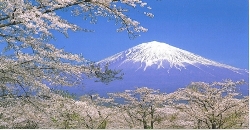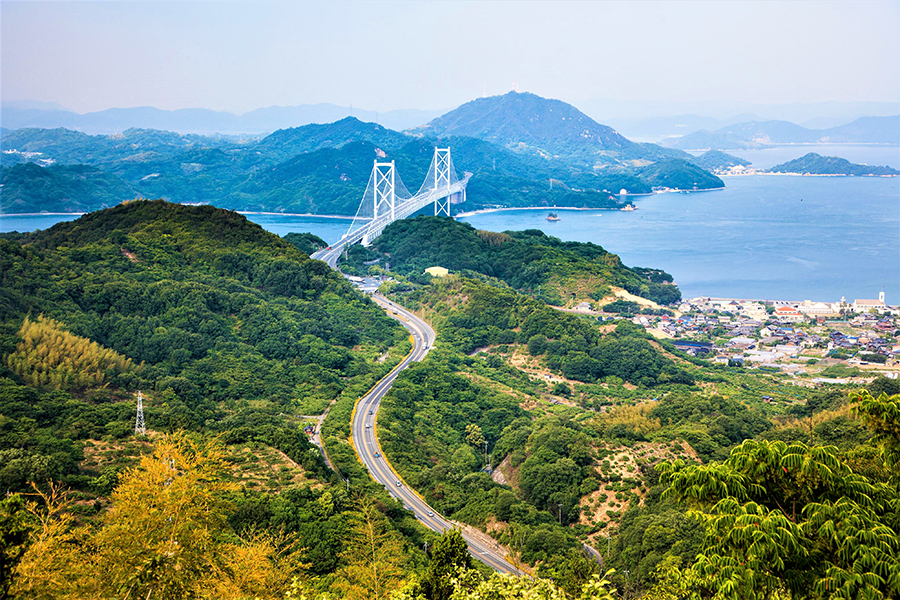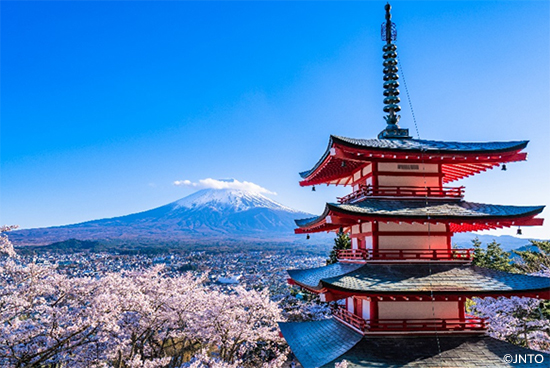9. 28. 2018
Warning alert on Typhoon Trami (Typhoon No. 24)
Typhoon Trami (Typhoon Number 24) is projected to approach Okinawa and Amami Islands on September 29th and continue northeastward along Japan through October 1st.
Travelers visiting Japan are advised to check the latest local weather reports, follow directions from local officials and take any other appropriate actions as needed.
For the latest information, visit here.
9. 15. 2018
Transportation and tourist information after Typhoon Jebi (Typhoon No. 21)
KANSAI AREA TRANSPORTATION AND TOURIST INFO UPDATE
On September 18th, the airport access railroad is scheduled to be reopened, and JR West and Nankai Electric Railway will resume their normal service to the airport from the first train.
Please check the websites for train schedule.
JR West: http://www.westjr.co.jp/global/en/
Nankai Electric Railway: https://www.howto-osaka.com/en/traffic
For the latest information, please visit here.
9. 6. 2018
Earthquake in Hokkaido
On September 6th, 2018 at approximately 3:00 am JST (6:00 pm GMT), a strong earthquake (Magnitude 6.7) occurred in Japan's northern island of Hokkaido.
According to Japan Meteorological Agency, this earthquake poses no tsunami risk. Travelers visiting Hokkaido are advised to be alert for major aftershocks for a week.
For more information, visit here.
7. 20. 2018
Recovery updates in local areas of Western Japan
As for The heavy Rain Event of July 2018, many tourism facilities in western Japan have resumed regular operations and welcoming tourists. Details will be renewed and added from time to time, so please check the latest updates on each website.
For more information, visit here.
7. 13. 2018
The Heavy Rain Event of July 2018
Following record rainfall in the western part of Japan, details of The heavy Rain Event of July 2018 can be found on Japan Meteorological Agency website. As of July 13th, there are cancellations and delays on some transportation except for Sanyo and Tokaido Shinkansen. Please check the latest information on each transportation website.
For more information, visit here.
6. 18. 2018
Northern Osaka Prefecture Earthquake
Japan National Tourism Organization Updated: June 18, 2018
On June 18th, 2018 at approximately 8:00 am JST (23:00 pm GMT), a strong earthquake (Magnitude 6.1) occurred in the northern Osaka area.
According to Japan Meteorological Agency, this earthquake poses no tsunami risk.
For more information, visit here.
1. 25. 2018
About Volcanic Activity of Mt. MotoShiranesan
Released by Kusatsu Town (January 24)
Mt. Motoshiranesan, located in Kusatsu-machi in Gunma, erupted on January 23. Kusatsu Onsen Town is located 7 kilometers away from the eruption site and no damage has occurred. Until safety in other areas is confirmed, Kusatsu International Snow & Spa Resort will open its Tenguyama and Onariyama courses only.
Released by Manza Onsen Tourism Association (January 23)
Manza Onsen Area is outside of the restricted area as it is located 3.2 kilometers away from the Kagamiike Pond area on Mt. Motoshiranesan. At present, there has been no effect from the eruption.
Released by Tsumagoi Village Tourism Association (January 23)
Though there has been no effect on Manza Onsen (including Manza Highway) at this time, please take caution.
1. Tourist Information Center
Japan National Tourism Organization (JNTO) continues to release updates and provide travel-related information on its website.
For visitors currently traveling in Japan, the Tokyo Headquarters of Japan National Tourism Organization (JNTO) provides information service at the Tourist Information Center (TIC):
1st Fl, Shin-Tokyo Building, 3-3-1, Marunouchi, Chiyoda-ku, Tokyo 100-0005
Phone: +81-(0)3-3201-3331
Service in English, Chinese and Korean
Open Daily (except Jan. 1) from 9am to 5pm
2. Post-Earthquake and Tsunami Situation
We are grateful for the warm support and thoughts from many people after the historic earthquake in Japan on March 11, 2011.
Despite Japan experiencing an unprecedented natural disaster in March 2011, the majority of Japan, including popular tourist destinations, withstood the natural disaster and rapidly recovered. The U.S. Department of State removed the travel alert to Japan on April 13, 2012, stating that "tourist facilities are widely available, except in coastal areas of Northeast Japan still recovering from the aftermath of the March, 11, 2011 earthquake and tsunami."
International organizations such as IAEA and the U.S. Nuclear Regulatory Commission, have affirmed the condition of the reactors as stable and safe. The U.S. government recommends that U.S. citizens avoid all unnecessary travel to areas described by the Japanese government on the following map.
Except for the neighboring areas near the nuclear power plants, there is no dangerous level of radiation detected in Japan. Tokyo is NOT within radiation contamination area, as it is located over 200km (124 miles) away from the Fukushima Daiichi nuclear power plant facilities. The radiation level in Tokyo is similar to that of New York City.
You can confirm the international comparison of radiation level here.
In order to tackle the contaminated water issue at the TEPCO's Fukushima Daiichi Nuclear Power plants, the Government of Japan has decided, mobilizing expertise of all the government authority, to play a further proactive role in taking countermeasures against the issue. In this context, on 3rd September, the Nuclear Emergency Response Headquarters decided "Basic Policy for the Contaminated Water Issues at the TEPCO's Fukushima Daiichi Nuclear Power Station (PDF) " Japan National Tourism Organization (JNTO) considers public health and safety as the top priority for international travelers to Japan, and continues to provide latest information from Japanese and international authorities and regulators.
At present, statistically-significant increase of radioactive concentration in the sea outside the port of the TEPCO's Fukushima Daiichi NPS has not been detected. However, the Government of Japan will continue to pay the closest attention to the situation, make every effort to work on the contaminated water leakage issue, and provide information to the international community in an appropriate way.
Influence of contaminated water is limited in the port of Fukushima Daiichi Nuclear Power Plants, which is smaller than 0.3km2 (74 acres). The government's monitoring system detects that the radiation level of the sea water stays below the standard of 10 Bq/L. The government's Nuclear Emergency Response Headquarters has issued the basic policy for the contaminated water issues here.
Products distributed to the public, including food and water, are rigorously inspected and approved by Japanese authorities for contamination safety. The Japanese government has instituted a food product monitoring system from the world's highest level of standard, screening over 412,000 agricultural products. So far, there are only 2,866 items (0.69%) has exceeding level of radiation, and these items have been already removed from distribution and disposed. The Ministry of Health, Labor and Welfare is disclosing results from the current radiation test on food and water here:
Tap Water: http://www.mhlw.go.jp/english/topics/2011eq/index_water_supply.html
Other food products:
http://www.mhlw.go.jp/english/topics/2011eq/index_food_radioactive.html (updated daily)
Other References:
Embassy of the United States in Japan
Radiation, Health and Food Safety Information Post-Fukushima
The Ministry of Foreign Affairs of Japan
http://www.mofa.go.jp/policy/page3e_000072.html
The office of Prime Minister of Japan and His Cabinet
http://www.kantei.go.jp/foreign/incident/index.html
World Health Organization (WHO)
World Meteorological Organization (WMO)
(Statements from international authorities)
- International Air Transport Association (IATA) "No restrictions to On Air Travel to Japan" (March 19, 2011)
- International Maritime Organization (IMO) "No restrictions on travel to Japan." (March 21, 2011)
- UN Confirms Safety of Japan Operations - No Recommendation for Passenger Screening, 1 April, 2011
- International Atomic Energy Agency (IAEA) : : IAEA Director General Issues Statement on Progress at Fukushima Daiichi Nuclear Power Station "The IAEA welcomes the announcement by the Government of Japan that the reactors at Fukushima Daiichi Nuclear Power Station have achieved a "cold shutdown condition"."(Dec. 16, 2011)
3. Useful Links
JNTO's Headquarters Notice --- Check the updates & many useful links.
Post 3.11 General Information
Operational status of Transportation
List of TICs
App "Safety Tips" for Earthquake and Tsunami Early Warning in Japan
U.S. Department of State (Japan Country Specific Information)
Embassy of the U. S. in Tokyo


















































